N-乙基正丙胺, 99%,N-Ethylpropylamine
产品编号:西域试剂-WR342246| CAS NO:20193-20-8| MDL NO:MFCD00015198| 分子式:C5H13N| 分子量:87.17
本网站销售的所有产品仅用于工业应用或者科学研究等非医疗目的,不可用于人类或动物的临床诊断或者治疗,非药用,非食用,
| 产品名称 | N-乙基正丙胺, 99% |
|---|---|
| 英文名称 | N-Ethylpropylamine |
| CAS编号 | 20193-20-8 |
| 产品沸点 | 61.5±0.0 °C at 760 mmHg |
| 产品密度 | 0.7±0.1 g/cm3 |
| 产品闪点 | -5.1±10.2 °C |
| 精确质量 | 87.104797 |
| PSA | 12.03000 |
| LogP | 1.16 |
| 外观性状 | 无色透明液体 |
| 蒸气压 | 184.9±0.1 mmHg at 25°C |
| 折射率 | 1.396 |
| 稳定性 | 如果遵照规格使用和储存则不会分解 避免接触 氧化物,酸 |
| 储存条件 | 保持贮藏器密封 放入紧密的贮藏器内,储存在阴凉,干燥的地方 |
相关文档
化学品安全说明书(MSDS)
下载MSDS质检证书(COA)
相关产品
| 危害码 (欧洲) | F,T,C |
|---|---|
| 风险声明 (欧洲) | R34 |
| 安全声明 (欧洲) | S26-S36/37/39-S45-S20 |
| 危险品运输编码 | 2735 |
| 包装等级 | II |
| 危险类别 | 3 |
| 海关编码 | 2921199090 |
|
N-Ethylpropylamine
Revision number: 6
SAFETY DATA SHEET Section1. IDENTIFICATION Product name:N-Ethylpropylamine Revision number:6 Section2. HAZARDS IDENTIFICATION GHS classification PHYSICAL HAZARDS Category 2 Flammable liquids HEALTH HAZARDS Category 1B Skin corrosion/irritation Serious eye damage/eye irritationCategory 1 Not classified ENVIRONMENTAL HAZARDS GHS label elements, including precautionary statements Pictograms or hazard symbols Signal wordDanger Hazard statementsHighly flammable liquid and vapour Causes severe skin burns and eye damage Precautionary statements: [Prevention]Keep away from heat/sparks/open flames/hot surfaces. - No smoking. Keep container tightly closed. Use explosion-proof electrical/ventilating/lighting equipment. Take precautionary measures against ignition by the static discharge and the spark. Do not breathe dust/fume/gas/mist/vapours/spray. Wash hands thoroughly after handling. Wear protective gloves/eye protection/face protection. IF INHALED: Remove victim to fresh air and keep at rest in a position comfortable for [Response] breathing. IF SWALLOWED: Rinse mouth. Do NOT induce vomiting. IF IN EYES: Rinse cautiously with water for several minutes. Remove contact lenses, if present and easy to do. Continue rinsing. IF ON SKIN (or hair): Remove/Take off immediately all contaminated clothing. Rinse skin with water/shower. Wash contaminated clothing before reuse. Immediately call a POISON CENTER or doctor/physician. [Storage]Store in a well-ventilated place. Keep cool. Store locked up. [Disposal]Dispose of contents/container through a waste management company authorized by the local government. N-Ethylpropylamine Section3. COMPOSITION/INFORMATION ON INGREDIENTS Substance/mixture:Substance Components:N-Ethylpropylamine Percent:>97.0%(GC) CAS Number:20193-20-8 Chemical Formula:C5H13N Section4. FIRST AID MEASURES Remove victim to fresh air and keep at rest in a position comfortable for breathing. Inhalation: Immediately call a POISON CENTER or doctor/physician. Skin contact:Remove/Take off immediately all contaminated clothing. Gently wash with plenty of soap and water. Immediately call a POISON CENTER or doctor/physician. Eye contact:Rinse cautiously with water for several minutes. Remove contact lenses, if present and easy to do. Continue rinsing.Immediately call a POISON CENTER or doctor/physician. Ingestion:Immediately call a POISON CENTER or doctor/physician. Rinse mouth. Do NOT induce vomiting. A rescuer should wear personal protective equipment, such as rubber gloves and air- Protection of first-aiders: tight goggles. Section5. FIRE-FIGHTING MEASURES Suitable extinguishingDry chemical, foam, carbon dioxide. media: Unsuitable extinguishing Water (It may scatter and spread fire.) media: Specific hazards arising Take care as it may decompose upon combustion or in high temperatures to from the chemical:generate poisonous fume. Precautions for firefighters: Fire-extinguishing work is done from the windward and the suitable fire-extinguishing method according to the surrounding situation is used. Uninvolved persons should evacuate to a safe place. In case of fire in the surroundings: Keep containers cool by spraying with water. Eliminate all ignition sources if safe to do so. Special protectiveWhen extinguishing fire, be sure to wear personal protective equipment. equipment for firefighters: Section6. ACCIDENTAL RELEASE MEASURES Personal precautions,Use extra personal protective equipment (self-contained breathing apparatus). Keep protective equipment and people away from and upwind of spill/leak. Ensure adequate ventilation. Entry to non- emergency procedures: involved personnel should be controlled around the leakage area by roping off, etc. Environmental precautions: Prevent product from entering drains. Methods and materials for Absorb spilled material in dry sand or inert absorbent before recovering it into an containment and cleaning airtight container. In case of large amount of spillage, contain a spill by bunding. up: Adhered or collected material should be promptly disposed of, in accordance with appropriate laws and regulations. Prevention of secondary Remove all sources of ignition. Fire-extinguishing devices should be prepared in hazards:case of a fire. Use spark-proof tools and explosion-proof equipment. Section7. HANDLING AND STORAGE Precautions for safe handling Technical measures:Handling is performed in a well ventilated place. Wear suitable protective equipment. Prevent generation of vapour or mist. Keep away from heat/sparks/open flame/hot surfaces. -No smoking. Take measures to prevent the build up of electrostatic charge. Use explosion-proof equipment. Wash hands and face thoroughly after handling. Use a closed system if possible. Use a ventilation, local exhaust if vapour or aerosol will be generated. Avoid contact with skin, eyes and clothing. Advice on safe handling: N-Ethylpropylamine Section7. HANDLING AND STORAGE Conditions for safe storage, including any incompatibilities Storage conditions:Keep container tightly closed. Store in a cool, dark and well-ventilated place. Store under inert gas. Store locked up. Store away from incompatible materials such as oxidizing agents. Air-sensitive Packaging material:Comply with laws. Section8. EXPOSURE CONTROLS / PERSONAL PROTECTION Install a closed system or local exhaust. Also install safety shower and eye bath. Engineering controls: Personal protective equipment Respiratory protection: Half or full facepiece respirator, self-contained breathing apparatus(SCBA), supplied air respirator, etc. Use respirators approved under appropriate government standards and follow local and national regulations. Hand protection:Impervious gloves. Safety goggles. A face-shield, if the situation requires. Eye protection: Skin and body protection: Impervious protective clothing. Protective boots, if the situation requires. Section9. PHYSICAL AND CHEMICAL PROPERTIES Liquid Physical state (20°C): Form:Clear Colour:Colorless - Very pale yellow No data available Odour: pH: No data available Melting point/freezing point:No data available Boiling point/range:79°C 4°C Flash point: Flammability or explosive limits: Lower:No data available No data available Upper: Relative density:0.72 Solubility(ies): [Water]No data available No data available [Other solvents] Section10. STABILITY AND REACTIVITY Chemical stability:Stable under proper conditions. Possibility of hazardous No special reactivity has been reported. reactions: Conditions to avoid:Spark, Open flame, Static discharge Incompatible materials: Oxidizing agents, Strong acids Hazardous decomposition Carbon monoxide, Carbon dioxide, Nitrogen oxides (NOx) products: Section11. TOXICOLOGICAL INFORMATION Acute Toxicity:No data available Skin corrosion/irritation: No data available Serious eyeNo data available damage/irritation: Germ cell mutagenicity: No data available Carcinogenicity: IARC =No data available No data available NTP = Reproductive toxicity:No data available N-Ethylpropylamine Section12. ECOLOGICAL INFORMATION Ecotoxicity: Fish:No data available Crustacea:No data available Algae:No data available Persistence / degradability: No data available BioaccumulativeNo data available potential(BCF): Mobility in soil No data available Log Pow: Soil adsorption (Koc):No data available Henry's LawNo data available constant(PaM3/mol): Section13. DISPOSAL CONSIDERATIONS Recycle to process, if possible. Consult your local regional authorities. You may be able to burn in a chemical incinerator equipped with an afterburner and scrubber system but exert extra care in igniting as this material is highly flammable. Observe all federal, state and local regulations when disposing of the substance Section14. TRANSPORT INFORMATION 3: Flammable liquid. Hazards Class: Subsidiary risk:8: Corrosive. UN-No:2733 Proper shipping name:Amines, flammable, corrosive, n.o.s. Packing group:II Section15. REGULATORY INFORMATION Safe management ordinance of dangerous chemical product (State Council announces on January 26, 2002 and revised on February 16,2011): Safe use and production, the storage of a dangerous chemical, transport, loading and unloading were prescribed. SECTION 16 - ADDITIONAL INFORMATION N/A |
| 上游产品 9 | |
|---|---|
| 下游产品 5 | |

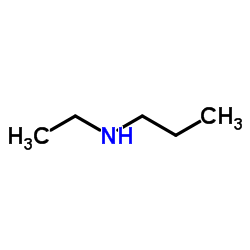

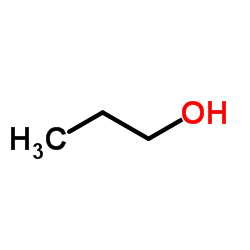
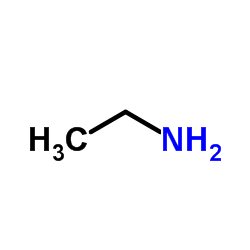




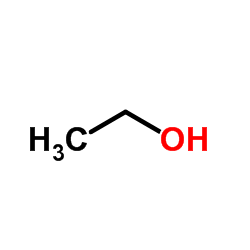
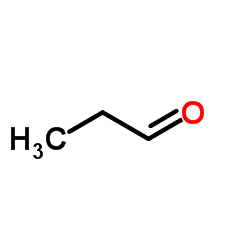
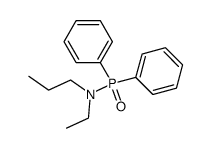

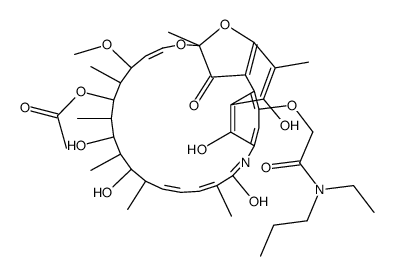
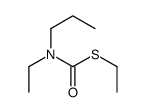
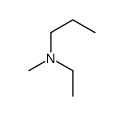
![N-ethyl-N-propyl-2,4,8,9-tetrazabicyclo[4.3.0]nona-2,4,7,10-tetraen-5-amine结构式](/20230522/6288-97-7.png)





 浙公网安备 33010802013016号
浙公网安备 33010802013016号